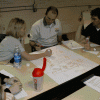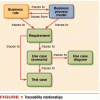|
|
Traditional Test Engineering, Your Days Are Numbered In the first installment of this article, Dr. James Whittaker discussed turning testing on its head—to revitalize and improve the value of late-stage testing. James also discussed ideas behind empowering your dogfooders, testers, and the crowd to significantly and efficiently improve software quality. In part two, Jason Arbon discusses the research and engineering experimentation behind realizing these ideas into new tools and processes.
|
|
 |
Simplify Your Combinatorial Testing Combinatorial testing is effective for testing multiple, non-sequential inputs that affect a common output in complex software. But, it's easy to misapply it or become a slave to the output. Learn to overcome limitations and benefit fully from this technique.
|
|
|
|
IDEs and Build Scripts Teams benefit from using both IDEs like Eclipse and integration tools like Maven. Steve Berczuk discusses the risks that can occur when IDEs and build scripts diverge, and provides guidelines for keeping the two consistent, so that teams can be more productive.
|
|
|
|
Let's Talk Agile Agile development employs more oral communication, feedback, and interaction than traditional development. These communication tools can help ease the transition into the more interactive agile team relationship.
|
|
 |
Tools for Our Time Software development has really changed over the years, and programming languages have evolved along with it. Learn more about D, one of today's more interesting languages; it's a high-level, type-safe language with the efficiency of C++ and the convenience of Java.
|
|
|
|
The Power of Low-Tech Tools The level of technology that goes into a tool is only as valuable as the service that you, as a user, get out of that tool. Some low-tech tools--such as the four that Esther Derby lists here--have a place in the technologist's toolbox, too.
|
|
 |
An Elephant in the Room We make software so that people can use it. Yet these users are so hard to define that they are often simply ignored. This six-step approach to Interaction Design can help you bring your customers down to size so that you can provide the right product for them.
|
|
|
|
A Look at McCabe IQ: Metrics Analysis and Code Coverage Gedaliah Friedenberg encourages developers and development managers to use the McCabe IQ tool to enhance their development process and deliver better software to QA.
|
|
 |
Automating Requirements Traceability Developing software to meet users' specific needs can be a difficult task. Verification and validation activities can help ensure that you are building the right software right.
|
|
|
|
In Search of Defect Tracking Systems Defect tracking systems influence business-critical decisions. Building and installing a corporate-wide defect tracking system takes a small but well-balanced development team. Your implementation may be as simple as opening the package and typing "setup" or it may take months of programming. Here's how to find and implement the right system for your organization.
|
|

